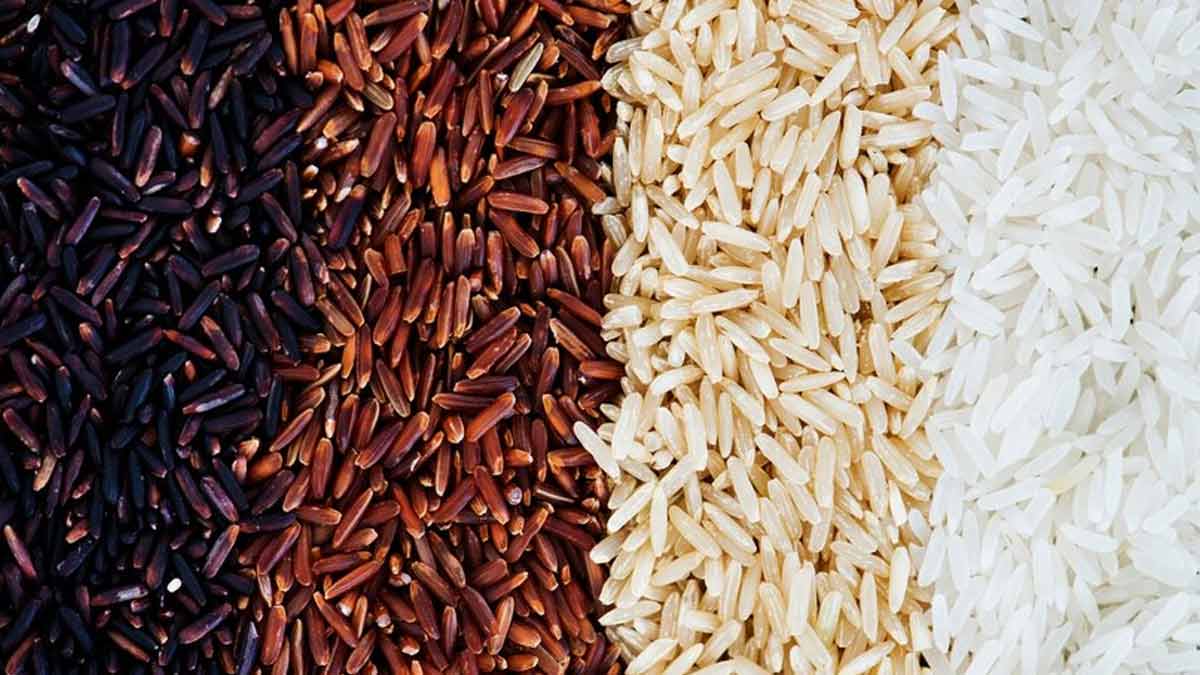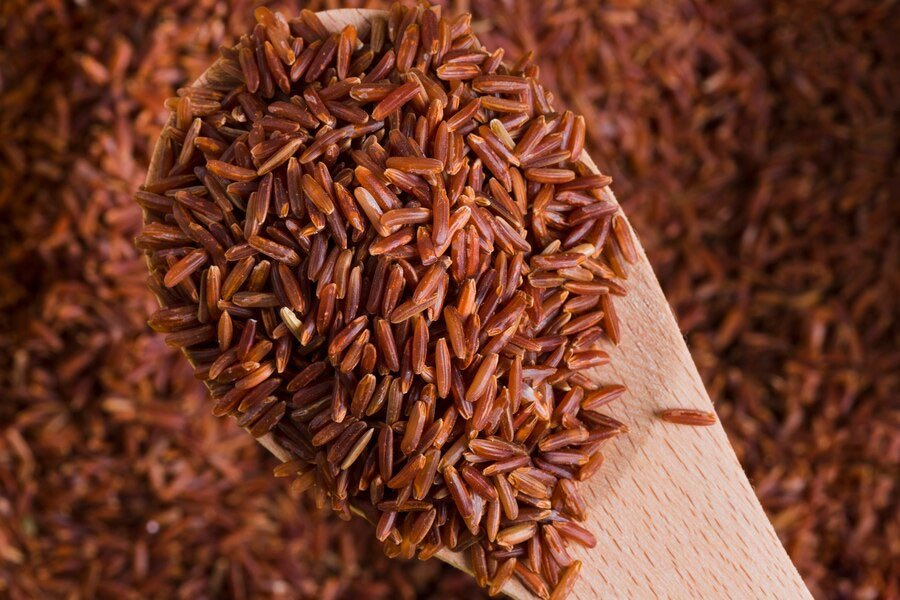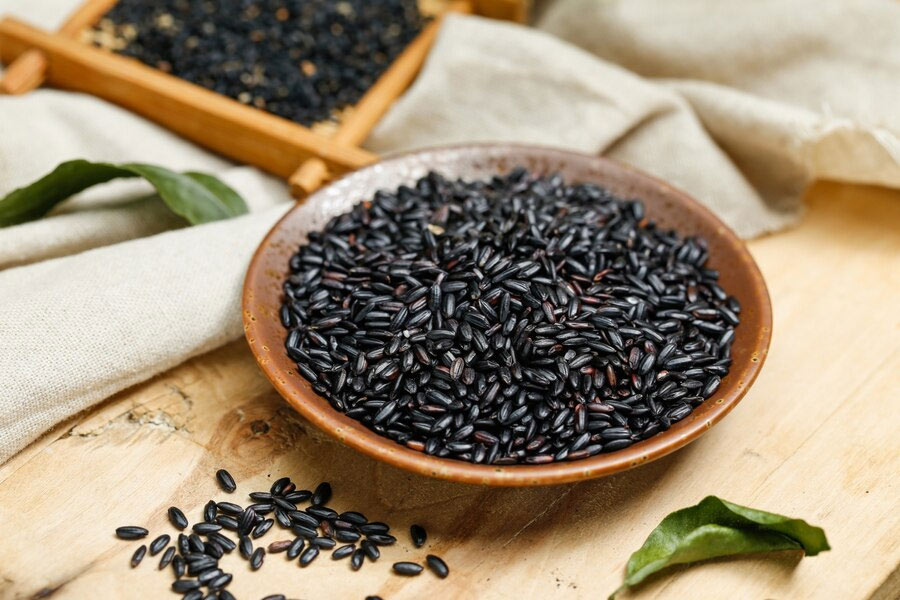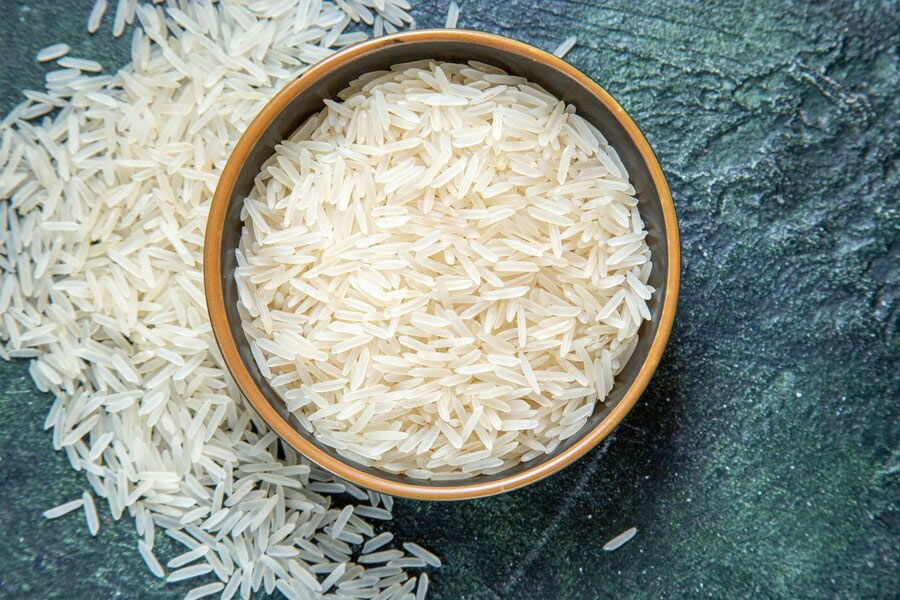
Are you often confused when selecting which rice to consume? Rice, a staple food providing nourishment and sustenance, is available in various types, such as red, black, brown, and white. Each type boasts its own unique flavour, texture, and nutritional profile, leading many to wonder: which one is the healthiest choice? We spoke to our expert Dr Ekta Singhwal, MSc Dietician, Ujala Cygnus Group of Hospitals, who shared the differences between various types of rice and which one is healthier?
Table of Content:-
Types Of Rice And Their Nutritional Value

Red Rice
“Red rice is a variety of rice that has a reddish-brown colour when uncooked. It is a whole grain rice, meaning that it contains all parts of the grain, including the bran, germ, and endosperm”, said Dr Singhwal. Its distinctive colour comes from anthocyanins, antioxidants also found in foods like blueberries and red cabbage. These compounds offer potent anti-inflammatory and heart-protective properties.
Nutritionally, red rice is rich in fibre, vitamins, and minerals. According to a 2017 study, it was found that red rice contained more iron, magnesium, calcium, and zinc than white rice.
“Also, its low glycemic index helps regulate blood sugar levels, making it a suitable option for individuals managing diabetes or seeking to control their blood glucose levels”, Dr Singhwal.
Also Read: Calorie Deficit-Diet: Expert Explains This Go-To Weight Loss Diet And Its Impact On The Body

Black Rice
Like red rice, black rice is a whole-grain variety that retains its bran layer and germ, contributing to its dark colour and nutty flavour.
“One of the most notable features of black rice is its high antioxidant content, particularly anthocyanins and flavonoids. These antioxidants possess powerful anti-inflammatory and anti-cancer properties, potentially reducing the risk of chronic diseases, such as heart disease and certain types of cancer”, highlighted Dr Singhwal.
Furthermore, black rice is an excellent source of fibre, essential vitamins, and minerals, including iron and manganese. Its fibre content aids in digestion, promotes satiety, and supports overall gut health.
Since black rice includes nutrients that help with illness prevention and control, it is regarded as a nutraceutical and functional food component, as stated in Food Chemistry Advances.

Brown Rice
Brown rice, often touted as a healthier alternative to white rice, undergoes minimal processing, retaining its bran layer and germ. This preservation of the whole grain structure ensures that brown rice maintains its fibre, vitamins, and minerals, making it a nutritious choice for individuals seeking to improve their diet.
Dr Singhwal said, “Nutritionally, brown rice is rich in fibre, which aids in digestion, promotes feelings of fullness, and helps regulate blood sugar levels. It also contains essential nutrients, such as magnesium, phosphorus, and B vitamins, which play key roles in maintaining overall health and well-being.”
The higher fibre content of brown rice compared to white rice contributes to its lower glycemic index, making it a suitable option for individuals with diabetes or those aiming to manage their blood sugar levels.
Also Read: Brown Rice VS White Rice: Which One Is Healthier And Why?

White Rice
Dr Singhwal said, “White rice, the most widely consumed variety globally, undergoes extensive processing, resulting in the removal of its bran layer and germ. While this processing enhances its texture and appearance, it also strips white rice of many nutrients, including fibre, vitamins, and minerals.”
Despite its lower nutritional content compared to brown, red, and black rice, white rice remains a staple in many diets due to its versatility, affordability, and longer shelf life. However, its high glycemic index may lead to spikes in blood sugar levels, posing challenges for individuals with diabetes or those striving for better blood glucose control.
Bottomline
Dr Singhwal concluded, “When comparing red, black, brown, and white rice, it's evident that the whole grain varieties – red, black, and brown rice offer superior nutritional benefits compared to white rice. These whole grain options are rich in fibre, antioxidants, vitamins, and minerals, making them excellent choices for promoting overall health and well-being. You can achieve optimal health by incorporating a variety of whole-grain rice types into your diet, offering a wide range of nutrients and flavours.”
[Disclaimer: This article contains information provided by an expert and is for informational purposes only. Hence, we advise you to consult your expert before adding anything to your diet, especially if you are dealing with any health issues.]
Also watch this video
How we keep this article up to date:
We work with experts and keep a close eye on the latest in health and wellness. Whenever there is a new research or helpful information, we update our articles with accurate and useful advice.
Current Version